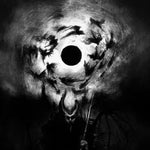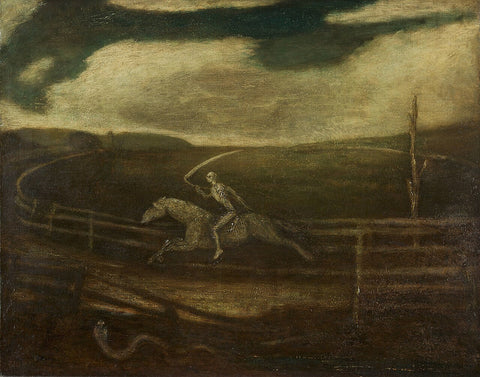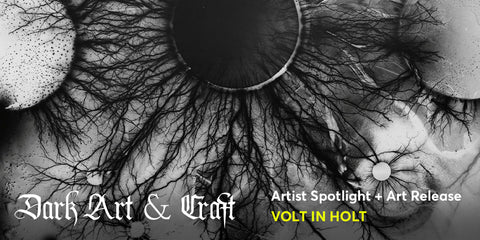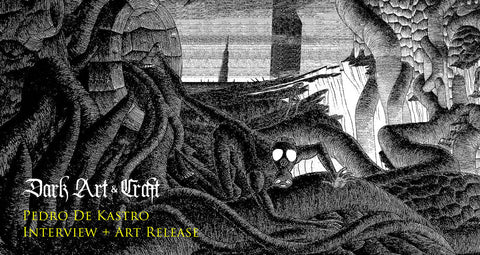The Witch (Night Piece) Engraving 1626, Jan van de Velde. Image via CC0 Cleveland Museum of Art.
Halloween or "All Hallows' Eve" is the celebration observed on the 31st of October dedicated to remembering the Dead. While, celebrated in many modern countries the origins are generally believed to spring from ancient Celtic harvest festivals. The Gaelic Festival of Samhain (From October 31st through November 1st Summer's End) is often cited as a link between the "Christian" Halloween and it's deeper Pagan roots. It seems likely as this most Devilish holiday incorporates much more than just Christian theology - heavily borrowing from past pagan traditions, rituals and imagery. As early as 800AD the early Church in England was trying to "Christianize" the older Celtic pagan festivals.
The word Halloween or Hallowe'en only dates to around 1745 AD coming from the Scottish term All Hollows' Eve showing the relative youth of the Modern embodiment of the Holiday. Today's Halloween in a vast cauldron or practices, rituals and Art from these earlier sources. While the celebration has also been obscured by commercial and other interests the symbols and Art are where our interest lies. Please enjoy some of our printed Halloween Art reproductions that are inspired by or reference the Halloween harvest season and it's ancient symbolism.

The Headless Horseman Pursuing Ichabod Crane (1858) is a painting by American John Quidor image via Wikipedia public domain. Original the turnip and later in America the pumpkin became a symbol of Halloween.
Samhain
Samhain, the Gaelic festival marks the end of summer and the Harvest season. Those celebrating believe that the veil between our world and spirit realm is lifted allowing for increased interaction with the otherworld or liminal time. The festival signals the "Dark Half" of the year and incorporated divination rituals such as Bonfires and mirror-gazing that are still in practice today. The holiday has a deep relationship to Irish mythology and the cave of Oweynagat (Gaelic for "Cave of Cats" or Cath/Battle) believed to be the origin place of Samhain and the gateway to the Underworld. Beginning in the 16th century the wearing of costumes originated in the Gaelic regions. The traditions continue with modern Wiccans and other pagan groups celebrating Samhain yearly with traditional, pre-Christian practices.
Source https://www.history.com/topics/holidays/samhain
Other Festivals of the Dead, such as the Roman festivals of Pomona and Parentalia are also considered templates for the modern celebration.

La Danse du Sabbat Paul Christian, Histoire de la Magie, Du Monde Surnaturel Et de la Fatalite a Travers Les Temps (1870), illustration are by Émile Bayard (1837–1891) a contemporary of Gustave Doré
Death and Gothic Themes
Art has long been a part of the yearly Harvest and death festivals providing the needed visuals. Human skulls, death symbols, costumes to protect from malicious undead and harvest imagery fill the Art of the celebration. Works of gothic and Horror (who often center on morbid topics) have also been adopted by the "Dark" holiday. As Halloween spread in England and then America mischief night pranks, carved turnips and pumpkins to ward spirits and costumes became common. During the 19th and 20th centuries Artists such as Gustave Dore and Harry Clarke created beautiful and horrific images based on Edgar's Allen Poe's stories bringing with them a detailed macabre subject matter.
"Deep, Deep, and For Ever, into some Ordinary and Names Grave" Harry Clarke illustration for Edgar Allen Poe's works whose gothic and macabre themes are beautifully portrayed
Source https://en.wikipedia.org/wiki/Halloween
Unpublished frontispiece for Baudelaire's ‘Les Fleurs du mal’ by Félix Bracquemond (1857). CC Public Domain via Met Museum

Illustration of Mr. Hyde framed Alder wood Art Poster. Character from 1886 novella Strange Case of Dr Jekyll and Mr Hyde.
Skeleton Tree Halloween Woven Blanket on DarkArtandCraft.com
Día de los Muertos
The Mexican holiday of Día de los Muertos is a mixture of Aztec indigenous festivals and Mesoamerican death rituals. Over time the joyous celebration, which seeks to support the dead in their journey, evolved into a Multiple day event associated with October 31st and early November. It is of note that "All Saints Day" is also celebrated by Catholic churchgoers in Mexico but is based on more traditional Christian celebrations. The Día de los Muertos shares with Halloween an affinity for skulls, skeletons, death worship and darker imagery.
Devil's Night
In the US the night of October 30th before the traditional Halloween holiday is Devils Night or Mischief night. Originally started as a evening filled with pranks and small vandalism commencing the night before Halloween it mimicked the past festival customs of trickery. Dating from the 1940s this yearly event was marked with wide spread Arson in some major US cities.
The Fall of the House of Usher Art Print by Artist Harry Clarke. Clarke was an Irish stained-glass artist and published book illustrator. Born in Dublin, Ireland he was a main figure in the Irish Arts and Crafts Movement and illustrated many of Edgar Allen Poe's books providing a dark visual narrative to each.
"I had walled the monster up within the tomb!" Art for Poe's "The Black Cat" (1936) Harry Clarke illustration










